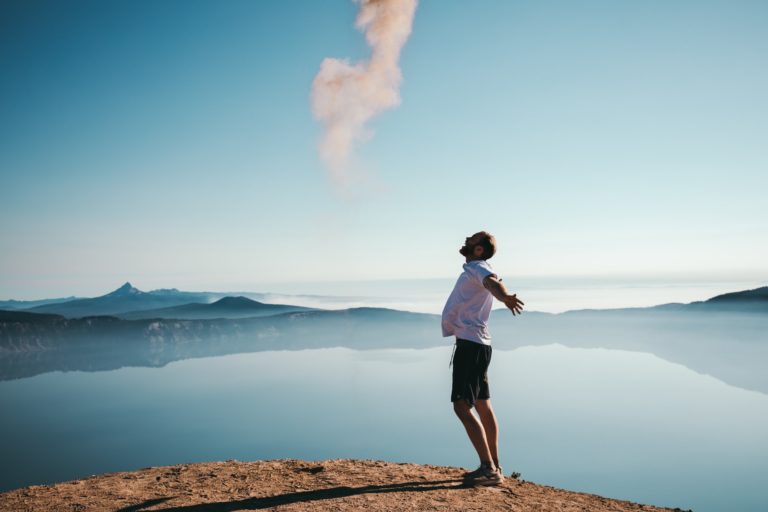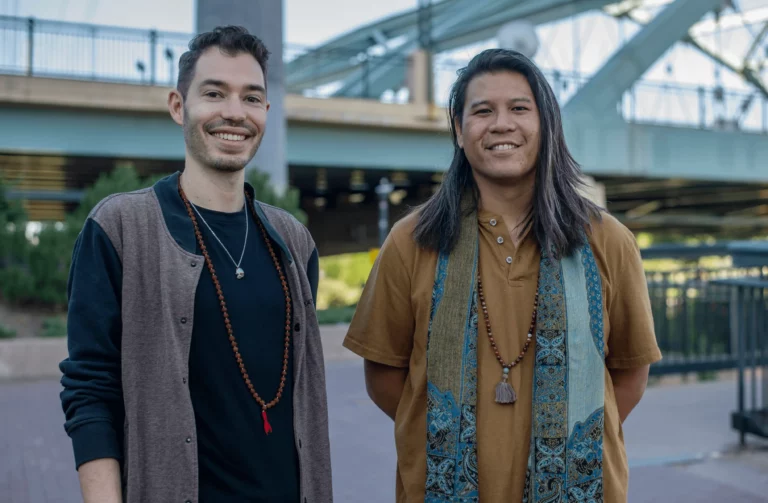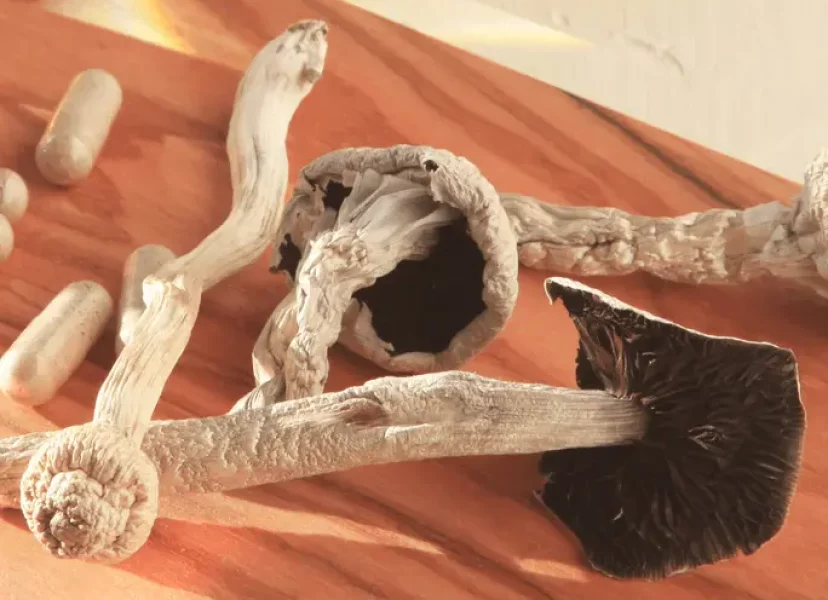The winter solstice has officially marked the passing of the shortest day of the year, meaning the days are getting shorter and the sun is setting earlier. If, like a lot of the population, you feel that your mood descends with the early setting sun, this article is for you. Feeling sad in the winter is a real, physiological experience – so much so that we call it what it is: SAD.
SAD is an acronym for Seasonal Affective Disorder, which is a clinical mood disorder characterized by a seasonal pattern of depressive episodes that occur in late Fall and Winter and then remit in the Spring and summertime. It is also colloquially known as seasonal depression.
Although SAD is not given as much air time in scientific literature or in mainstream discourse as other forms of depression, its presence is still very common. An estimated 10-20% of recurrent depression cases follow this seasonal pattern (Roecklein & Rohan, 2005).
As you might expect, the disorder’s prevalence is notably linked with more northern climates which experience longer winters and daker days. Today, we’ll shed a much needed light onto the therapeutic use of psychedelics for treatment of seasonal affective disorder. First, let’s discuss the causes seasonal depression and why we can feel so viscerally blue when the sky turns gray.
The Link Between Serotonin & Seasonal Affective Disorder
The etiology of Seasonal Affective Disorder is quite complex and not so neatly ironed out. As with many disorders, it is likely to result from an interaction of biological, psychological, and environmental factors.
Most epidemiological models of SAD emphasize the role of neurotransmitters, hormones, and circadian rhythm dysregulation. The common denominator in these biological factors is the implication of serotonin systems (Roecklein & Rohan, 2005).
Studies have associated SAD to the presence of polymorphisms (2+ variant forms of a specific DNA sequence) both in the serotonin transporter promoter region and in the serotonin 2A receptor (Sher et al., 1999).
This may be indicative of genetic and biological transmission, but we also know that the natural rate of serotonin turnover in the brain is the lowest in the winter seasons. This is because light exposure is a proven catalyst for serotonin production (Roecklein & Rohan, 2005).
One etiological model of SAD proposed by Young M. A. (1999) offers a dual vulnerability model – you could think of this as a mind-body conversation. Being physiologically vulnerable towards vegetative symptoms in the winter interacts with being psychologically vulnerable towards cognitive feelings of sadness.
The Role of Light Exposure in Seasonal Affective Disorder
When talking about the cognitive and affective symptoms of “sadness” in SAD, cross-sectional studies have shown that they tend to resemble those of Major Depressive Disorder (Levitan et al., 1998).
Individuals with seasonal and nonseasonal depression reported similar negative attributional styles, automatic thought patterns, and dysfunctional attitudes, with one crucial difference being that seasonal depression is, of course, only seasonal.
This leaves room for examining some of the environmental factors linked to SAD. When we talk about light exposure, the concept of “photoperiods” has been thrown around quite a bit in scientific literature as an instrumental variable in the onset of seasonal depression. A “photoperiod” is defined as hours from sunrise to sunset, determining the number of daily hours of sunshine.
Significant correlations have been observed between shorter mean monthly photoperiod, cooler temperatures, and the number of people who reported feeling depressed in those months (Adamsson et al., 2018).
It seems like a moot point to consider one’s temperature as a modifiable factor, but it does seem to be the case that exposure to light (or lack thereof) strongly correlates with depressive symptoms.
Factors pertaining to duration and intensity of light exposure, such as the shifting of circadian rhythms or individual variation in melatonin secretion (a neurohormone secreted during the dark), all likely play a causal role in the onset of seasonal depression (Lewy et al., 1980).
The Circadian Rhythm & Seasonal Affective Disorder
If you’ve ever had trouble falling or staying asleep, you might’ve tried taking melatonin supplements as an over-the-counter remedy to tell your body that it’s time to sleep. You may have noticed a feeling of grogginess in the next morning following melatonin supplementation. This effect exemplifies a disadvantage to secreting more melatonin than necessary.
The circadian rhythm delay that happens in the winter is essentially just that. Light is known as the primary “zeitgeber”– a German word meaning “time-giver”. Light is a synchronizing agent for the circadian system, keeping our biological and physiological rhythms internally synchronized.
Since environmental light is the natural synchronizer of our biological clock, it keeps us in accordance with the 24 hour day. In winter, our bodies produce a lot of melatonin much earlier in the day because they don’t receive the red light from sunlight which cues the stop of melatonin production. So to recap, our bodies need light in order to have energy.
Current Interventions For Seasonal Affective Disorder
You may have heard of something called Bright Light Therapy (BLT), which is the dispensing of artificial light to combat exposure to lack of natural sunlight. BLT is the most widely-recognized and widely-used intervention for people with symptoms of seasonal depression.
Light therapy is a non-pharmacological, non-psychological treatment which uses a fluorescent light box to diffuse full-spectrum bright light for a recommended period of time at a specified luminosity.
The hypothesized mechanism of action is the correction of winter circadian rhythm phase delay by increasing synaptic serotonin (i.e. preventing the reuptake of serotonin and leaving it to flow freely).
Bright light protectively impacts our circadian rhythms and serotonin production by diffusing the right amount of lux at the correct luminosity to reach our eyes’ light-absorbing molecules and restore or reset the balance of melatonin (Campbell et al., 2019). Really, we’re simple creatures. It doesn’t take much to make us happy, but it all comes back to serotonin production.
SSRIs are generally the first-line of treatment when it comes to targeting the serotonin system and transmitting happy chemicals to our brains. Commercially available antidepressant medications may also be prescribed to people who experience clinically depressive symptoms in the winter.
Clinical recommendations usually include a combination of bright light therapy, SSRIs, and traditional psychotherapy for patients who are experiencing distress from their bouts of seasonal depression. However, research strongly favors another alternative for increasing serotonin retention and for making people more receptive to any complementary psychotherapy treatment: psychedelics.
How Psychedelics Can Help Treat Seasonal Affective Disorder
By now, many of you may be familiar with the effects that psychedelics have on mood regulation via our serotonin system. Psilocybin binds to the 5-HT2A serotonin receptors – the same receptors implicated in the etiology of SAD.
In addition to psilocybin controlling our serotonin receptors, it also mediates the amygdala– the “feeling” part of our brains which responds to negative external stimuli. This can be an equally crucial mechanism of action when it comes to controlling depressive symptoms.
Psychologically speaking, many people who suffer from depression experience a “negative triad” of obstinate cognitive biases and schemas about 1) themselves, 2) the future, and 3) the world around us.
At active doses, psilocybin mushrooms help dissolve preconceptions about ourselves and about how the world is structured. This leaves us with an open mind to believe that things could be different than they seem to the naked (or depressed) eye. This makes us more open to new ideas, including increased receptivity to traditional forms of talk therapy that teach lasting coping mechanisms.
In this way, psilocybin is proven to be particularly effective at targeting treatment-resistant depression, and in this case, makes itself a strong candidate for treating SAD specifically. Psychedelic therapy may also provide more instant gratification and release from the icy grip of seasonal depression than traditional medication interventions.
One infamous complaint reported by common antidepressant users is that it can take a long time before mood improvements are observed. SSRIs take anywhere from a few weeks to a few months for effects to kick in. For people who only experience depression seasonally, waiting a whole season for relief is not ideal.
However, according to the New England Journal of Medicine, in the most recent psilocybin trials, participants with a treatment-resistant episode of major depression reported feeling positive results immediately after two doses– a trial dose of 10 mg and a therapeutic dose of 25mg (Goodwin et al., 2022).
Since we know from a brief literature review on the epidemiological models of SAD that some of its causal roots and almost all of its symptomatic manifestations resemble that of major depression, it is a safe bet to target treatment of SAD in the same manner.
Even more miraculously, many of the participants in these trials experienced a continued positive response for up to three months after the treatment (Goodwin et al., 2022). Thus, results were not only immediate, but also sustainable.
This long-lasting mood-enhancing effect from a single dose of psilocybin mushrooms is particularly promising and favorable for people who only experience depression in the winter.
Psilocybin treatment for SAD can be administered in one single dose like this, or in a continuous low dose throughout the winter. This timeline is parallel to the two treatment paradigms in which bright light therapy is offered and encouraged.
Microdosing Psychedelics For Treating SAD Symptoms
Aside from receiving a singular therapeutic dose of psilocybin to stock up on brightness as we hibernate for winter, another option is to frequently microdose throughout the winter season. Microdosing is taking enough psilocybin to affect your mood and energy levels, but not to induce a full-fledged psychedelic trip.
Anecdotal evidence so far suggests that a small dose of magic mushrooms taken once every 2-3 days can help control symptoms of depression. This has also been shown to have a close to immediate effect, with results being reported 1-2 days after the first dose.
This allows patients to take their dose upon first flare up of SAD symptoms and then discontinue as the seasons begin to change, without needing to wean on or off a prescription drug due to accompanying side effects.
Altogether, psilocybin may be a reliable and hopeful promise for maintaining a more stable mood throughout the seasons and helping people feel less turbulent and susceptible to the changing outdoor winds.
Final Thoughts
It is always worthwhile to emphasize and reiterate that there is no universal and uniform method to treating mental health conditions, and for engaging in psychedelic treatment. What works for someone may not be the solution for someone else, and visa versa.
To explore what psychedelic therapy might look like for treating your SAD, we empower you to book a consultation with us. Our pre-vetted network of psychedelic facilitators would be more than happy to service your journey. To learn more about all-things-psychedelic, head on over to our resources page!



